Fusion-grade Steel Produced At Scale In UK-first
10th January 2025
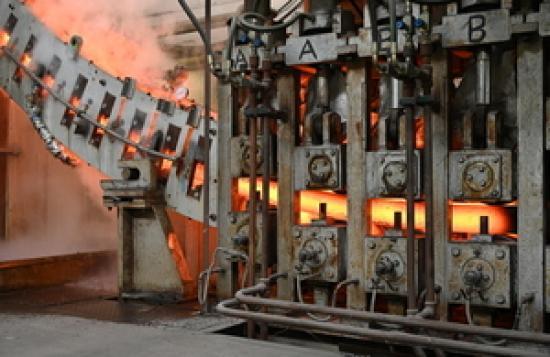
Researchers achieve 10x production cost savings for reduced activation steel.
A United Kingdom Atomic Energy Authority (UKAEA) working group has successfully demonstrated the industrial scale production of fusion-grade steel.
This achievement has the potential to reduce production costs by an order of magnitude and improve the efficiency of future fusion powerplants.
In just its first year, the NEURONE (Neutron Irradiation of Advanced Steels) consortium has achieved a UK-first breakthrough. The group successfully produced fusion-grade reduced-activation ferritic-martensitic (RAFM) steel on an industrial scale, using a seven-tonne Electric Arc Furnace (EAF) at the Materials Processing Institute (MPI) in Middlesborough.
David Bowden, Group Team Leader for Materials Science and Engineering at UKAEA and NEURONE programme lead, said: "One of the major challenges for delivering fusion energy is developing structural materials able to withstand the extreme temperatures (at least up to 650 degrees Celsius (°C)) and high neutron loads required by future fusion powerplants."
The high temperatures and radiation levels caused by the high neutron loads arise as a result of the fusion reaction. The structural materials therefore serve an important role maintaining the integrity of the fusion powerplant under these conditions.
Based on EAF technology, with enhanced purification and thermomechanical protocols, this approach has the potential to dramatically decrease production costs by up to 10 times compared to conventional RAFM counterparts, utilising existing and readily scalable infrastructure within the supply chain.
MPI led the trials which enabled the manufacture, testing and analysis of specialist high temperature steels initially at laboratory scale leading to industrial scale trials in their EAF.
Richard Birley, NEURONE project lead at MPI said: "As the only sovereign UK steel research facility able to produce RAFM steel at this scale this is a groundbreaking moment for nuclear fusion R&D."
"The production of 5.5 tonnes of fusion-grade RAFM steel lays the foundation for cost-effective manufacturing of these types of fusion steel for future commercial fusion programmes," Dr Bowden explains.
"NEURONE plans to produce advanced variants of RAFM steel, capable of operating up to 650°C - a stretch target, given the solid-state physics of irradiated materials behaviour. Developing these types of steel could also benefit adjacent industries that require high-strength, high-temperature structural steels, such as nuclear fission or petrochemicals. The programme also intends to produce an optimised advanced RAFM alloy using the electric arc furnace at a similar multi-tonne scale to the best EU developmental fusion (RAFM) steel (EUROFER 97)," he concludes.
The NEURONE Consortium is a ~£12M collaboration between UKAEA's Materials Division and academic and industry partners across the UK, as well as international partners, which provide access to neutron irradiation facilities.
NEURONE was established to research, test and develop steels to operate at higher temperatures compared to conventional counterparts. This will maximise the capacity of fusion machines to extract heat, which is used to power turbines and create electricity, improving the overall efficiency of fusion powerplants.
More information about NEURONE Consortium
The NEURONE Consortium consists of representatives from universities and organisations around the UK. Universities include the University of Swansea, University of Sheffield, University of Birmingham, Imperial College London, University of Manchester, University of Bristol, University of Strathclyde Glasgow and University of Oxford. Two industry partner organisations - the Materials Processing Institute and Sheffield Forgemasters - are involved as well as The Australian Nuclear Science and Technology Organisation (ANSTO). NEURONE is also supporting a range of PhD students and summer student placements to upskill the next generation of researchers.
NEURONE has also produced more than 50 different variants of advanced reduced-activation ferritic-martensitic (ARAFM) steel alloy for analysis. New approaches have been established for analysing damage to materials, and data has been compiled on the performance of small initial lab-scale melts of material which range between 100 to 400 grams in mass.
There is potential opportunity for specialist UK steel manufacturers to be involved with the NEURONE Consortium's activity in future, considering different aspects of ARAFM steel manufacture such as forging, rolling, and developing optimised process parameters.
Find out more about the Materials Research Facility at UKAEA
PHOTO
NEURONE project billet leaving the caster and entering the product straightener - Image Credit: Materials Processing Institute
Related Businesses
Related Articles
UKAEA develops 3D printing for fusion components
At its recently opened Central Support Facility (CSF), UKAEA has commissioned an electron beam additive manufacturing machine that can be used to incorporate tungsten into components, alongside a selective laser manufacturing machine. Fusion can play a key role in a global low carbon energy future.Advancing Fusion Remote Maintenance: Industry Collaboration Driving Innovation
As part of the Fusion Futures (FF) programme, UKAEA's Remote Applications in Challenging Environments (RACE) has partnered with industry leaders to develop two groundbreaking technologies for remote maintenance in fusion energy engineering. Thanks to FF funding, industry has taken the lead in maturing UKAEA technology concepts—delivering real-world solutions that enhance operational autonomy and reduce maintenance burdens in extreme environments.UKAEA launches International Fellowships Scheme for fusion
UKAEA has launched the International Fellowships Scheme, an initiative to help expand the global talent pool supporting the fusion industry. The scheme is part of the UKAEA's Fusion Opportunities in Skills, Training, Education and Research (FOSTER) Programme, which aims to train, support, and empower the next generation of professionals, who will help deliver fusion power to the grid.Kyoto Fusioneering and Astral Systems join Culham fusion hub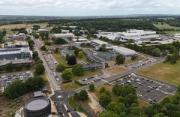
UKAEA's Culham Campus welcomes Kyoto Fusioneering and Astral Systems as its latest tenants. Two pioneering companies, Kyoto Fusioneering and Astral Systems, have joined the growing cluster of fusion technology and AI organisations at United Kingdom Atomic Energy Authority's (UKAEA) Culham Campus.
UKAEA To Lead The Creation Of A Robotics And AI Cluster
UKAEA will lead the creation of a new £4.9m nuclear robotics and artificial intelligence cluster across Cumbria and Oxfordshire. The robotics and AI cluster was announced by UK Research and Innovation (UKRI) as one of seven new projects to kickstart economic growth and address regional needs: www.ukri.org The robotics and AI cluster will link Cumbria and Oxfordshire to accelerate the decommissioning of the UK's legacy nuclear fission facilities and keep people out of hazardous environments.
Diamonds Are Forever? World-first Carbon-14 Diamond Battery Made In Uk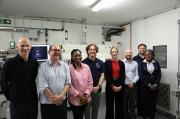
The world's first carbon-14 diamond has been produced with the potential to provide power for thousands of years. Scientists and engineers from the UK Atomic Energy Authority (UKAEA) and the University of Bristol have successfully created the world's first carbon-14 diamond battery.
UKAEA Monthly Newsletter Latest Edition
Find out what has been happening at UKAEA in our monthly newsletter. Read about our recent activities and upcoming events.
UKAEA Newsletter - Edition 11 Published Today
Find out what has been happening at UKAEA in our monthly newsletter. Read about our recent activities and upcoming events.
Corwm Visits Dounreay Nuclear Site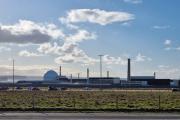
Members were given an overview of the scale of the problem and challenges faced in the decommissioning of the site. In the last week of March 2024, several members of CoRWM led by the Chair, Sir Nigel Thrift, made the long journey up to the North of Scotland to visit the Dounreay nuclear site, now managed by Nuclear Restoration Services.
Design Contract Awarded For Dounreay Shaft And Silo Work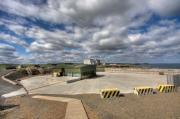
Dounreay has awarded an important waste clean-up contract to Jacobs as the site plans for the future of its deepest historic radioactive waste store. Jacobs and its supporting partners have been awarded a 6-year contract to provide a design management team to produce a fully integrated design for the shaft and silo project.
